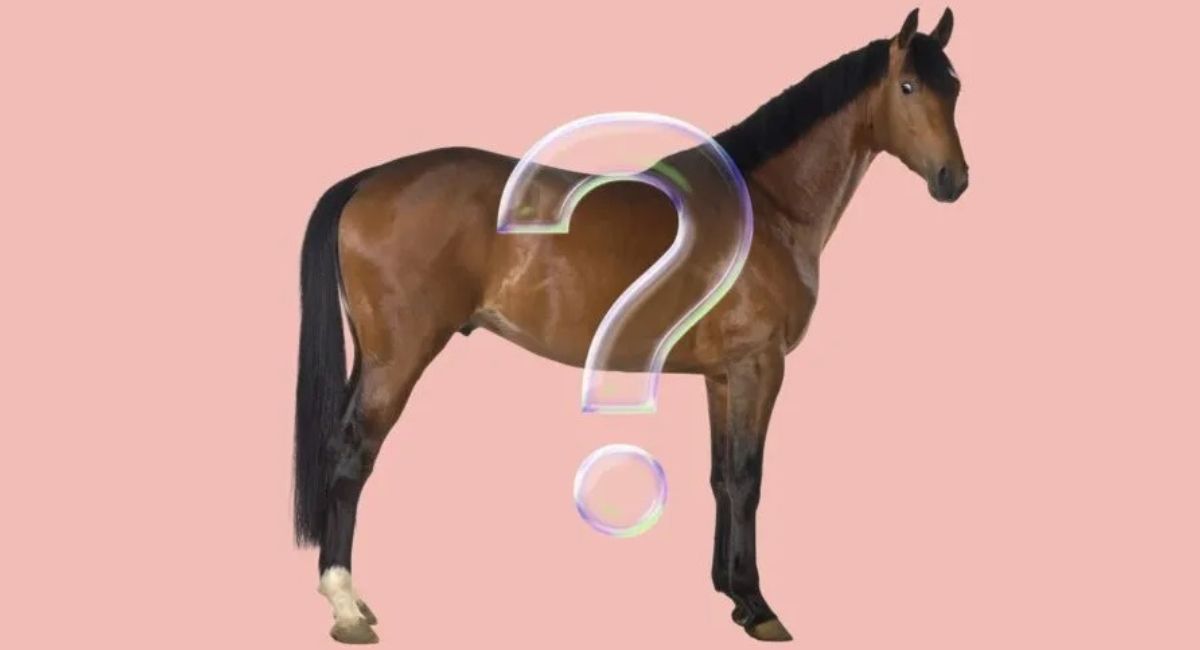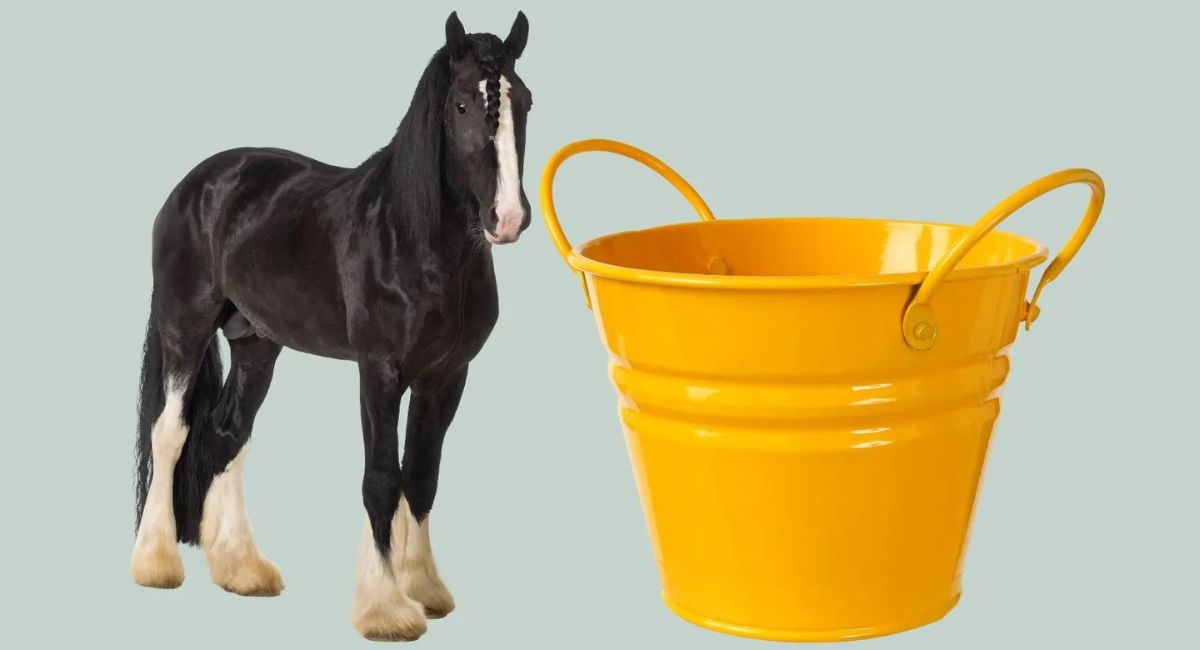Menu

There are plenty of myths in equestrian sports, but how many of them actually hold water? Here at the editorial office, we've tried to gather some of them and see if they are true.
We've previously written about myths that we've tried either to confirm or debunk. But in the horse world, there are really many myths - and there are some that are continuously debunked, but new ones are also added regularly.
FALSE. There is no guarantee that your 170 cm horse can jump the high S-classes - and your 130 cm pony might surprise you by jumping well over a meter. It's much more about the horse's physics, your own physique, genetics, will, and not least training and technique for both horse and rider.
Read more here about how you can improve your own performance over the jump.
Did you know that the thoroughbred horse Huaso in 1949 jumped an impressive 2.47 meters?
Source: Agria
FALSE. Both you and your horse need to - mentally as well as physically - charge up and also recuperate afterward. It does no good to train the same thing over and over again. Leading up to a competition, you can advantageously have a few days in a row where you train what you need to know for the competition. Afterward, you can take some days where you train lighter.
Variation in training is good for both the horse's mental and physical well-being. This applies to both hobby riders, competition riders, and everything in between. In the days leading up to the competition, the horse should be kept active, but it should primarily be successful experiences, and it should not be overtrained. You wouldn't yourself run a full marathon the day before a marathon. With intense and hard training (for humans as well as horses), there will be an accumulation of lactic acid in muscles and blood. This means that aerobic combustion (biological processes that require oxygen) is challenged, and therefore the combustion shifts to anaerobic combustion (combustion without oxygen). This creates lactic acid, which is a waste product. A large amount of lactic acid results in reduced muscle function. If there are either large amounts of lactic acid, or it happens repeatedly, there is a risk that your horse will get muscle damage and kidney blow.
You know your horse best, and therefore you also know what it can endure. Give it the breaks you deem necessary, but drop the hard training right up to a competition.
After a competition, where both you and your horse have performed, a walk can be time really well spent. Preferably outdoors, if you have the opportunity. The walking is good for both the muscles and the horse's head (and your head).
Read also: Muscles tell the tale: Is your horse using its body correctly in training?
PARTIALLY FALSE. You can practice and practice and practice, but you probably know the feeling that a program or a course just doesn't stick. The brain often remembers better if you associate movement with it. That means you can try to "ride" the program or the course yourself. Another tip is to ask others to test you in the program or the course. You can also buy a board where you can draw your program.
The most important thing is that you don't keep it inside your own head, but get it out of your head and into your body.
PARTIALLY FALSE. Pressure, and especially constant pressure, doesn't necessarily make your horse go up in the trailer. It requires time and patience. Constant pressure, such as a loading rope used incorrectly, can unnecessarily stress the horse, and whether it goes up or not, it was probably not a great experience - neither for the horse nor the person. Line Hummel has written an article about trailer training, which you can read here.
If you use pressure, then remember to release the pressure as soon as the horse shows the slightest progress with the task. You can read more tips on trailer training here.
FALSE. A horse doesn't necessarily perform better if we put more equipment on it. Extra equipment can be good if it helps the horse, but the question is when does it do that? For the rider's part, more equipment can help refine the aids, but conversely, it can also mean more equipment that you have to keep track of.
Overall, it's about basic riding, basic riding, and basic riding - and not more equipment. Often, the money can also be well spent on good instruction.
It's our experience here at the editorial office that more equipment often just gives you more things that you have to carry from your locker to the stable when the horse is to be saddled up. And the more equipment, the greater the likelihood that it can bother your horse. So be absolutely sure that it is fitted correctly, but also that it is used correctly.
Read also: The horse owner: Never have I ever...
FALSE. We can easily debunk this one. At least when it comes to crib feed, but roughage is another story. Your horse's amount of food depends much more on, for example, breed, genetics, activity level, medical history, and similar factors.
Furthermore, the horse - regardless of size - has a relatively small stomach. This means that the horse cannot digest large amounts of crib feed at one time - a maximum of 2.5 kg per feeding, which should be distributed over several times a day. The horse's stomach is not big, and the majority of your horse's food should be high-quality roughage, supplemented with the necessary vitamins and minerals.
There are many money - and worries - to be saved by having a carefully planned feeding schedule for your horse.

FALSE. Laminitis can unfortunately occur year-round and affect all types of horses. There are many different reasons why a horse becomes laminitic - and it's not always the grass and a high sugar content. Also, we can debunk the myth that only overweight horses can become laminitic.
If it's due to an imbalance in the horse's ability to regulate insulin, it's also worth being aware of laminitis in autumn and spring. Here, the sugar content in the grass can still be high.
Furthermore, laminitis can also be caused by other diseases, if the horse, for example, has to stand still for a long time. Thus, it can relieve unnecessarily on one leg, and that can also trigger laminitis.
Read also: Recognizing equine conflict behavior
FALSE. Dressage rider Cathrine Laudrup Dufour once posted a video on her Instagram, which quite nicely shows what happens if we just sit on the horse. It's not much, we can reveal!
Most riders would agree that riding - and especially stable work - is hard work! Riding gives you a stronger core musculature because you constantly have to keep yourself upright and well-balanced in the saddle. Additionally, riding enhances your coordination, as you constantly have to use many muscles. Generally, riding increases your body awareness. And that's also why it is used as a form of therapy, both for the body and mind.
Besides the physical aspect of riding, there's also the mental part. The horse doesn't plan its own feed schedule, training plan, or book the next vaccination appointment. Therefore, being a horse owner also places high demands on you as the owner when it comes to planning and coordinating.
PARTIALLY FALSE. Most horses can actually do well with good roughage, vitamins, and minerals. Often, it's our need to care for and pamper our horses that leads us to give them a little extra in the feed. There's nothing wrong with that, but it's important to consider whether the horse needs it. Or is it just costing you extra money?
It's important to emphasize that if your veterinarian or similar has advised you to give your horse a supplement, then it should certainly have it.
FALSE. Unfortunately, this is a myth that has thrived in many riding schools. Instead, you become a better rider through practice, practice, and more practice - from the saddle, that is - and possibly good instruction, which ensures that you don't end up in situations where you might fall off. Even though horses are large animals that can react suddenly, you can do a lot to ensure that you stay better seated in the saddle in case something unexpected happens.
Of course, it can never be completely avoided that you might taste the sand. If it happens, here are four tips on how to fall off without getting hurt.
Read also: Despite a cosmetic flaw, Lyra has found her dream pony: She is my best friend
Today, we especially use the word myth as a synonym for a false belief. "It is a myth that ...", we often hear politicians say. This new meaning stems from a later era's assessment of the phenomenon.
A myth in the classical sense is a type of story whose character is based on a pictorial representation of the world's, gods', and humans' creation, order, and downfall. The study of a complete circle of myths within a specific culture is called a mythology.
Source: Litteraturensveje.systime.dk
Sources
Netdyredoktor: Winter feeding of horses
Din Flexible Sundhed: Riding - that's why it strengthens your body!
Brogaarden: Training and recuperation